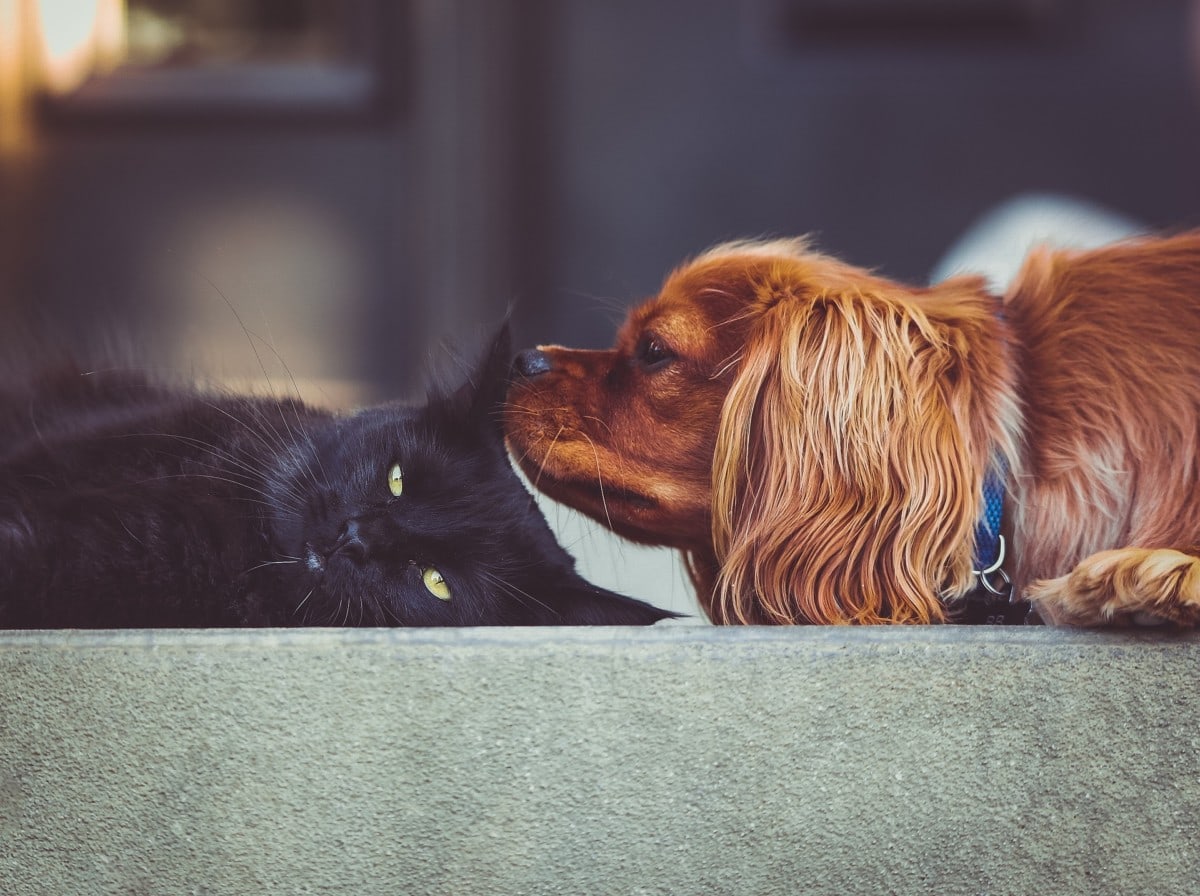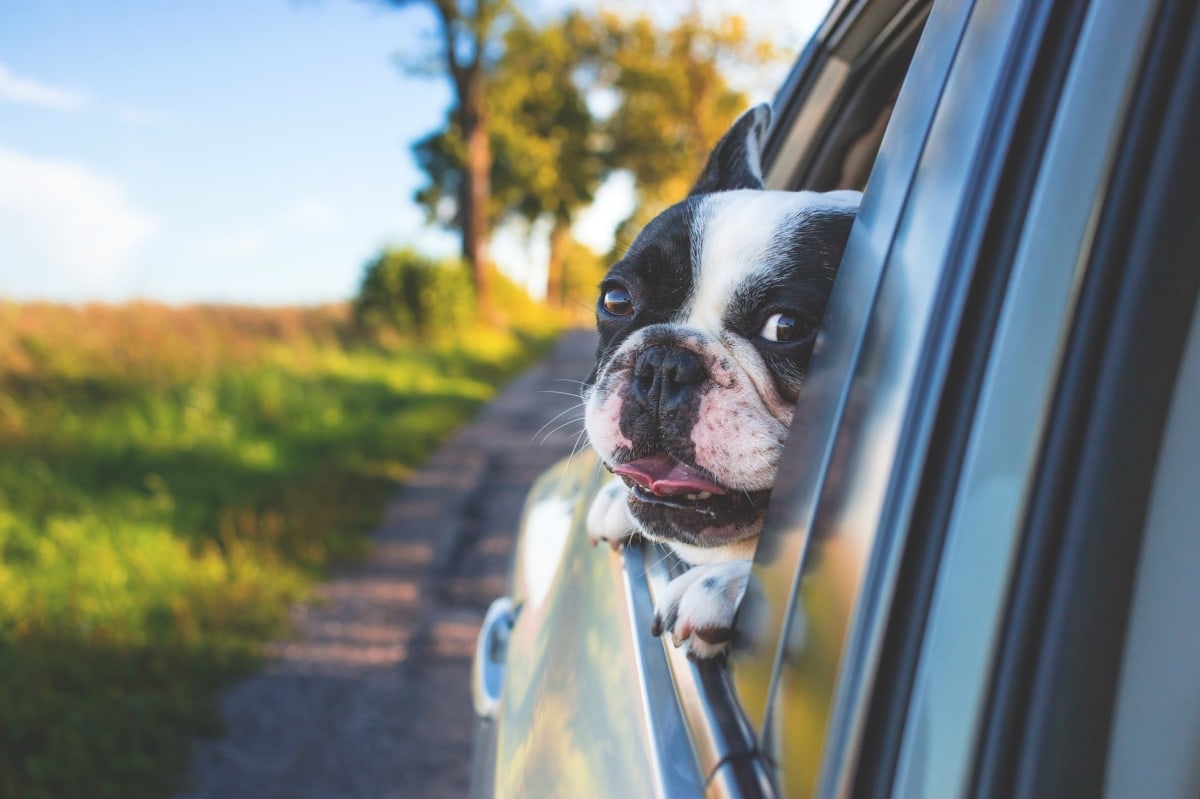Moving to a new city or town can be incredibly stressful, and it’s also a huge stress to your pet. Whether you are relocating from Austin, TX to Portland, OR, or just moving a few neighborhoods over, taking your pets’ feelings into consideration is important. New sights and sounds and unfamiliar smells can combine to make a move upsetting to even the most well-behaved and mellow of animals. If you are moving with a pet, here are some tips from experts to help you make your move go smoothly.

Comb the yard to make sure your dog can’t escape
Prevent 4-legged escape artists! Walk every inch of the perimeter of your yard and think like a dog. Fences and gates specifically, look for gaps or weaknesses, big dogs jump over or breakthrough, and small dogs could slip under/between them. –Little Rascals Pet Care
Give your dog ample chances to expel their energy
Make sure your dog has ample chances to get their energy out during the transition, which could be super challenging for you to accomplish since you have so much to do yourself. So consider hiring someone to help with adventurous, lengthy dog walks all throughout the move. A tired dog is a happy dog. This will also help get them out of the house while the movers are working. -David Levin, Owner, Citizen Hound
Take advantage of artificial pheromones
One tip that most people aren’t aware of for moving with pets is the use of artificial pheromones. Products like Feliway for cats and Adaptil for dogs are synthetic pheromones that replicate natural calming ones that the animal’s bodies make. They are a good way to let your pet know that their new home is safe and welcoming. -Dr. Andrew Bean, BLVD Vet
Let your dog decompress
Make sure that you allocate time when you first bring your dog to their new home. Give them time to sniff everything and decompress along with lots of attention and love. Make sure that their dog bed and favorite toys are there so that they have some familiar smells. -Dan Grimm, Desert Labrador Retriever Rescue
Arrange for your pup to stay somewhere else on moving day
Be sure to leave them someplace they are already familiar and comfortable with, such as at a friend or family member’s home, their pet sitter’s home, or their favorite Dog Day Care. This will allow you to focus solely on the move while ensuring your dog is in good hands. –Buster and Whiskers
Analyze your new home as your pet would
Before you give your pet free rein of their new house, use their POV to sniff out any safety concerns. Check that windows have screens and are secure, especially if you have a cat unfamiliar with second-story houses. If your new home has a sliding glass door, help your pup out by adding decals or sticky notes to avoid run-ins. Your new home will be filled with unfamiliar sounds, which may inspire a great escape. Consider a white noise machine to block out noises, and make sure you are familiar with the latches and locks on your new doors and gates. Don’t forget to update your contact information on your pet’s chip ID in case that happens! –Barking Bungalow
Prepare your pet for the journey
Prepare your pet for a long journey that may accompany a move. This can easily be done by familiarizing your pet to the car and/or carrier they will be traveling in and then start taking mini-trips (starting with short duration/distance trips). When they are comfortable traveling with you, it can ease some of the challenges of making a move.” – BETTER CITIES FOR PETS™, a Mars Petcare program

Expose your dog to their new environment
Before the move condition the dog by exposing him/her to a variety of indoor environments, both commercial and residential. After the move relax the dog by providing ample physical and cognitive stimulation- walks, runs, hikes, ball play, Frisbee, obedience practice, agility, scent work, tricks, puzzle toys. A tired dog is a happy dog and belongs to a happy owner. -Mark Spivak, Comprehensive Pet Therapy, Inc.
Don’t leave your dog alone for too long
Prevent separation anxiety by leaving the dog alone only at very small, incremental amounts of time and only after you see that your dog is clearly comfortable. It can be terrifying being left alone in a place you don’t consider home yet. -Shelley Leong, Bright Lights Dog Training
Keep pets confined to one or two rooms until they are comfortable
While moving into a new home, community or even a new city can be an exciting adventure for us humans, it can be much more complicated and stressful for your beloved pet, particularly cats and dogs. Once you’ve closed on your new home, keep pets confined to just one or two rooms until they become comfortable and then slowly allow them to access a new room. Also make sure you move some toys, beds and other familiar items in the new home right away to give your pet familiar smells in their new home. –Cold Noses News
Allow your dog to acclimate before fully moving in
If possible give your dog time to acclimate to the home before you move in. Bring a bed and toys to the house and if you can, excrement to the yard to bring their scent to the new environment. Bring the dog over to the house, let him wander the yard and hang out while you are unpacking, and then hopefully go back home to sleep. If you are closing the same day you are moving in, you can simply take your dog for walks in the neighborhood once or twice a week at different times for a few weeks before your purchase is complete. -Kelly Keeney, Compassionate Canine Training
Make sure your dog has a safe quiet place to hangout
With the increased commotion of people coming in and out and doors opening to the outside, your dog is at a much higher risk of getting out. With the new environment and stressors make sure your dog has a safe and quiet place to hang out during all the commotion. Just in case they do get out, make sure your dog is microchipped with the address updated, make sure they have an ID tag with a working phone number. –4 Luv of Dog Rescue
Establish boundaries in your new home
Just like with humans, too much freedom can sometimes be a bad thing, and this is important to remember when bringing your dog into a new home. Instead of letting them explore the new space on their own, you should walk them into their designated areas to establish boundaries on where they’re allowed to be. Doing this from the start, in addition to setting a routine for daily crate time, will create structure, order, and consistency. As a result, the ambiguity that leads to anxiety, fear, hyperactivity, and aggression will be gone and instead, your dog will know the expectations and be confident in their role. -Brad Bevill, Bevill Dog Behavior
Be sure to give your furry friend some extra love and attention
It’s important to know Australian Labradoodles, a lot of other breeds, bond to their people NOT to the house. Having said that, keep in mind that the people may be stressed with moving and some of that stress will show up in their pets. Remember to take a moment with your furry friend and give hugs as they’ll return your love ten-fold. -Julia W Wilson, Aladdin Labradoodles
Review or create a pet reward list
Review your pets rewards list or better yet create a new one with your pet’s most prized rewards and put them in order from 1 to 10. Number one is the all-time jackpot that you use for big rewards there so they’re very significant and notable. Post the list on the fridge and make sure everybody knows about it. Pick those big rewards and praise identifying the wonderful behavior even if it’s kind of spotty because you get what you focus on. –Angel Dog

 United States
United States Canada
Canada